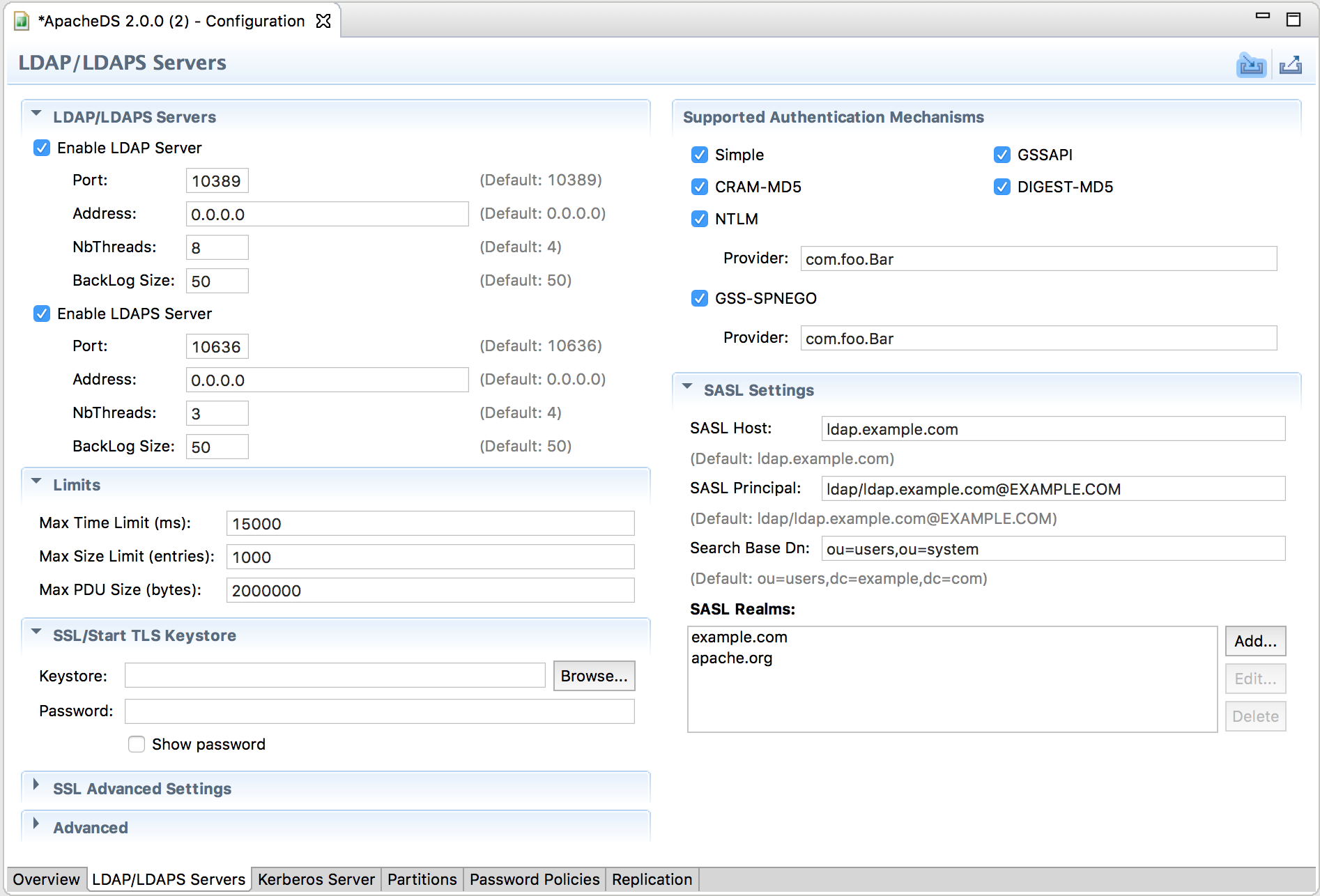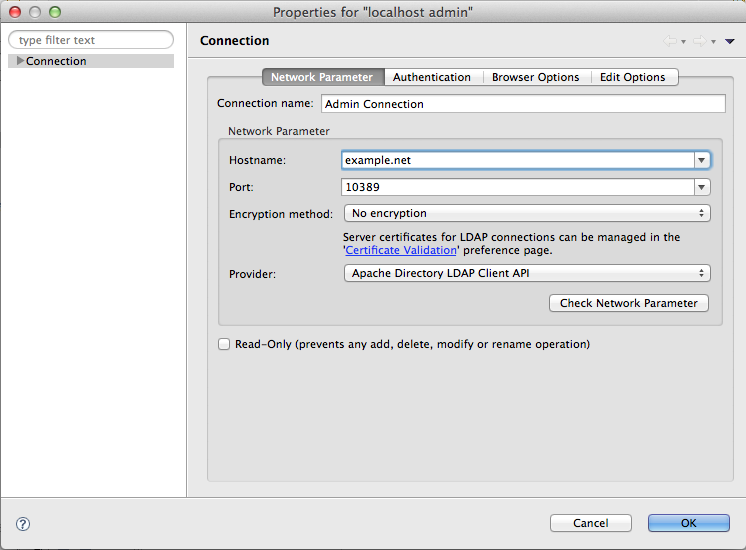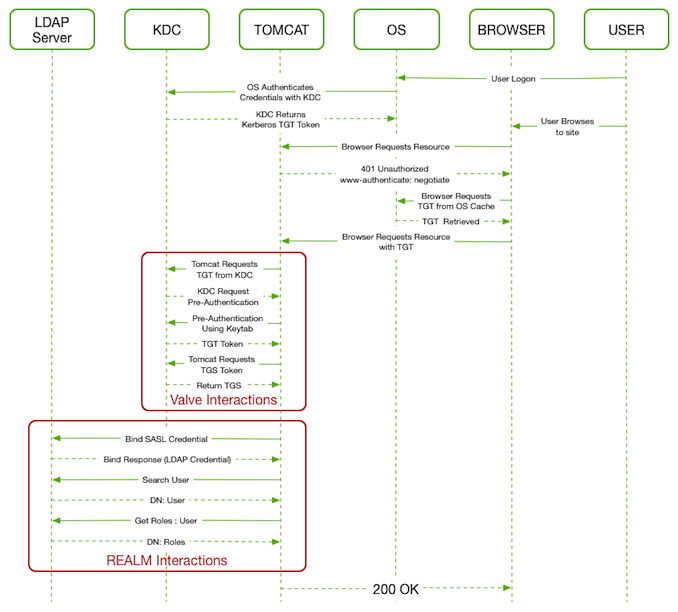

- #Apache directory studio kerberos sasl principal code#
- #Apache directory studio kerberos sasl principal password#
The connection string is as simple as the following, where I'm providing username and password in it:Ĭonnection con = Oozie action completes succesfully, and the Java log does not present any error: 1742 INFO .Utils - Supplied authorities: W12345:10000ġ742 INFO .Utils - Resolved authority: W12345:10000ġ766 INFO .HiveConnection - Will try to open client transport with JDBC Uri: Invocation of Main class completed <<<ġ785 INFO .Task - Task:attempt_1464245290012_0129_m_000000_0 is done. This JDBC connections works fine on the Sandbox without Kerberos.

Note that if the connection was encrypted, it remains encrypted.We have a Kerberised cluster and I'm trying to run a Java action in Oozie where I make a JDBC connection to Hive. In any case, the connection is not dropped when doing so. It’s possible to issue a Bind on an already bound connection and the existing LDAP session will be terminated, and replaced by a new LDAP session. The encryption types supported depends upon the Java version. This is not an issue if your authentication comes from key tables or prompts the user. If you write an application that expects to use existing credentials for logged in users, without prompting for a password, you may need to set default_ccache_name in /etc/nf to a file, e.g.
#Apache directory studio kerberos sasl principal code#
If your code asks for authentication to come from an existing credential cache, make sure that it is in a file. However it can’t read credentials from KEYRING or KCM. setLoginModuleConfiguration ( new KerberosConfiguration ( ) ) SaslGssApiRequest = new SaslGssApiRequest ( )

Issuing an anonymous bind is simple, you neither provide a user nor a password: You either get bound, or will receive an LdapException if an error occurs.

Most of the time, the bind operation will not return anything. The first one is the easiest, but depending on the server’s configuration, will be accepted or rejected (not all servers allow anonymous binds) One can issue three kinds of simple binds: The second type is more complicated, and is used whenever authentication with a specific mechanism, like DIGEST-MD5, Kerberos or certificate based is required. It’s also possible to proceed with an anonymous bind explicitly. The first one is based on a userid/password sent to the server, which verifies the credentials are valid. There are two possible types of binds in LDAP: This operation does not close the connection, because, again bind != connection! Binding Once the user has finished interacting with the server, they can unbind, destroying the session held on the server. This information is limited, but includes the user’s credentials.īut it’s important to know that it’s possible to bind anonymously, which doesn’t require a user or password, and still be able to send requests to the server (although the server can forbid anonymous binds). The bind operation, on the other hand, creates a Session which will hold user information for the duration of the session. You must provide the address and the port in order to do this. However, it’s important to understand that binding is a different from connecting.Ĭreating a connection to an LDAP server opens a socket between the client and the server. In LDAP, if one wants to access the data in the base, the common way to do it is to bind to the server.


 0 kommentar(er)
0 kommentar(er)
